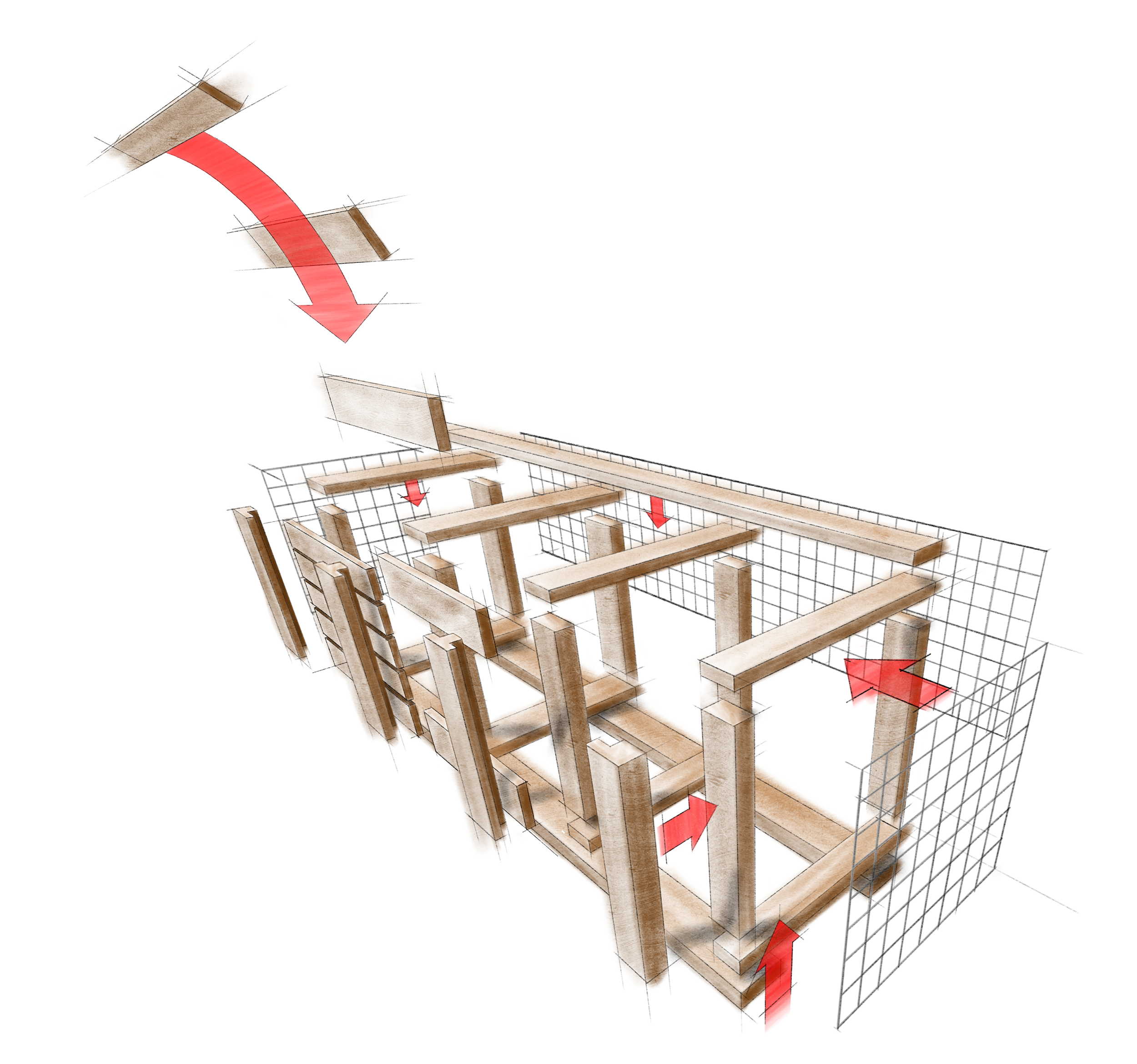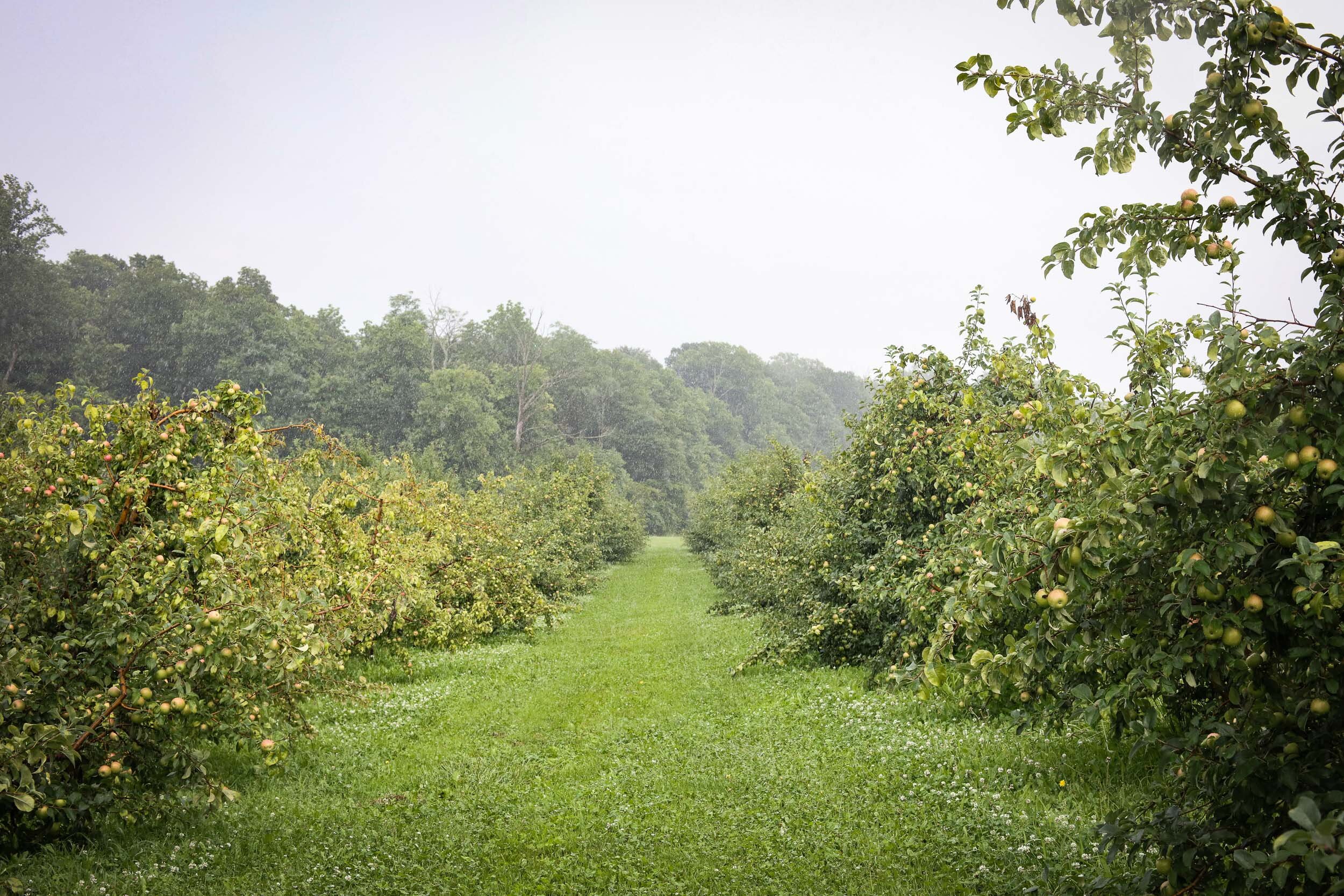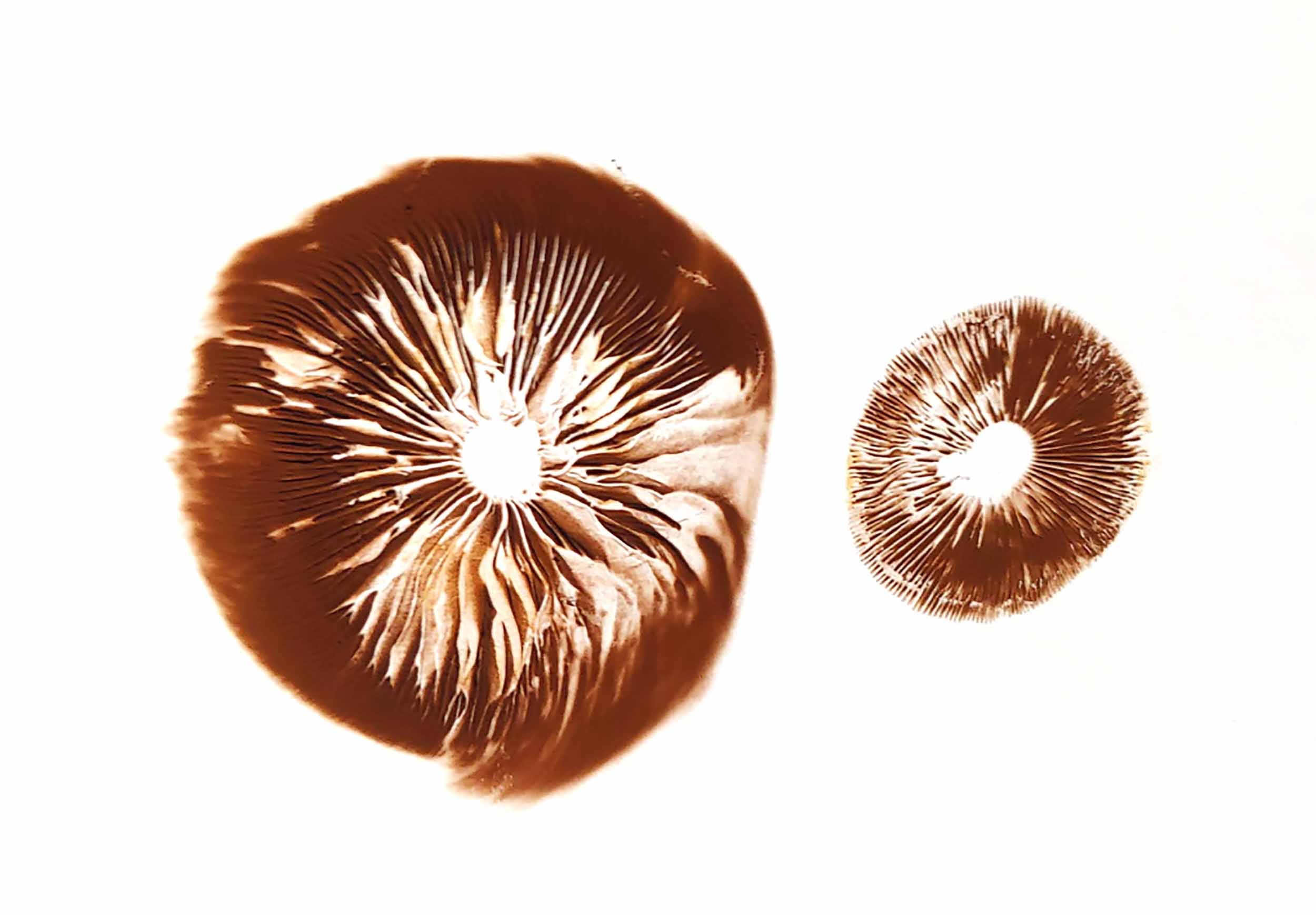Gardener’s Gold

Create an all-natural supplement for your soil — and reduce your household food waste — with an easy backyard compost project.
Food waste is epidemic in the U.S., and every year, we dump millions of tons of organic matter into our landfills where, decomposing without exposure to oxygen, they putrefy and release the deadly greenhouse gas methane.
Backyard composting is a powerful, individual way to combat this travesty. This practice, requiring no equipment and almost no effort, keeps organic matter close to home, where it cleanly, safely breaks down instead of being transported by gas-fueled truck to the landfill where it pollutes the environment. Not only does composting convert kitchen scraps to gardener’s gold, a boon to the health of your beds and your body, but it even cleans up the environment because it binds with toxic heavy metals, keeping them out of our stormwater systems and waterways. And in composting, you replenish a threatened global resource: the soil itself.
So you see those food scraps? Those food scraps are for composters. Always. Be. Composting.
For Michelle Balz, backyard composting is an obsession. She sees it as a way for homeowners to become more self-sufficient and independent. It’s good for their health and for the environment, she says. Balz should know. She’s long posted about her backyard adventures in decomposition on her blog, Confessions of a Composter (ConfessionsOfAComposter.blogspot.com) and recently published a book, Composting for a New Generation: Latest Techniques for the Bin and Beyond.
“It’s a very simple act,” says the Hamilton County Recycling and Solid Waste District assistant manager. “It doesn’t take a lot of work to make a backyard compost pile, and with it, we’re able to create this wonderful resource that’s really undervalued and has so many wonderful environmental benefits.”
Those environmental benefits include reducing how much we’re throwing away and sending to the landfill. Composting also helps soil retain and store carbon, part of the cycle of plant life. “A lot of climate scientists recommend composting and restoring our soils as one of the answers to climate change,” Balz says.
Greens + Browns
Green Learning Center coordinator Kylie Johnson teaches the Civic Garden Center’s annual Master Composter Course. She has a master’s in environmental studies and wrote her thesis on urban composting in the U.S. and the U.K. But she’ll be the first to tell you that a degree isn’t required to compost.
“If you’re a busy person on the go you can adopt a lazy composter method,” Johnson say. “Which is just basically putting your scraps in a pile and making sure you have about 25% greens and 75% browns. If you do that you’re not going to have any issues and there’s not going to be any smell associated with it.”
“Greens” are fresh vegetation: the fruit and vegetable scraps left over on your cutting board, plant or grass trimmings, spent coffee grounds, and, if you happen to keep horses, cows, or other herbivores, their manure. “Browns” include fallen leaves, shredded paper, cardboard, twigs, straw, sawdust, and wood chips. In the right ratio, these will quickly decompose, producing humus, a key ingredient to healthy, productive soil.
The aim is to foster the growth of aerobic bacteria, part of the web of microbes, fungi, and macroorganisms responsible for decomposition. Aerobic bacteria can eat just about anything, and they convert the carbon in browns into energy and use the nitrogen in greens to grow and multiply, producing plant nutrients like magnesium and phosphorous, as well as heat, which can both accelerate decomposition and help kill weed seeds and pathogens, making your compost healthier for your garden.
The only other ingredients these hard-working bacteria need are water and oxygen. If oxygen levels fall too low, they die off. Layering greens and browns in your compost pile, keeping it slightly moist, and regularly turning your compost will ensure a good mix and plenty of oxygen for these critters to do their work.
Friendly Microbes
There are different types of aerobic bacteria connected to the three stages of composting. Psychophilic bacteria operate at a low temperature (about 55°) and give off just enough heat during the initial stage to elevate the temperature of your compost to between 70° and 100°, which is when mesophilic bacteria get down to business. These generate more heat, increasing the temperature of your pile or bin to over 100°, which is when heat-loving thermophilic bacteria take over, thriving at temperatures between 130° and 160°.
These are the temperatures to maintain if you’re practicing the hot method of composting. It’s a balancing act: Unless the pile is fed new material and diligently turned, the thermophilic bacteria will burn through their available nutrients and return to dormancy, letting the mesophilic bacteria take back over for the final stage of composting. During this maturation phase, fungi, actinomycetes (higher bacteria), worms, and the visible critters that are all part of the ecology of decomposition help break the tougher substances down into rich humus.
Hot composting temperatures are good—they help kill unwanted seeds and pathogens. But they’re not necessary to create a healthy, nutritious supplement for your garden. You can also reduce pathogens and weed seeds by not putting gone-to-seed plants or animal-based waste in the pile in the first place. It’s important to note that if you are adding seeds to compost, no matter the temperature you get the pile to, it’s doubtful that you will kill all the seeds in it. Those few random sprouts are easy enough to hoe out of your garden, a small price to pay for natural, closed-loop fertilizer.
Take it Outside
For a simple composting setup, Balz recommends a basic leaf bin placed directly on the ground. Make a cylindrical enclosure of wire mesh at least 3 feet wide and fill it with leaf mulch. Or you can buy a covered bin or a sealed barrel composter. These make compost more quickly, make turning easy, and keep wildlife out, but are a little more difficult to unload. Because these enclosed bins prevent direct contact with the soil underneath them, add a couple of shovels-ful of good “live” soil to the barrel. Tuck your composting bin somewhere out of sight; a sunny exposure helps boost the temperature and accelerate the process.
Start by adding coffee grounds to your leaf mixture, and once you’re comfortable with this pairing, you’re ready to move on to fruit and vegetable scraps. Collect kitchen waste in a small compost tote (OXO makes a great one) under the sink or in a 5-gallon lidded bucket outside the back door. When adding these materials, bury them in the pile to keep critters and odor at bay. “When you open your bin you should not be able to see food scraps,” Balz says. Turn the mixture to incorporate the new material with stuff that’s starting to decompose, at least every other week and ideally weekly.
The best compost in town might be that produced by master composter and legendary local gardener John Duke, instructor emeritus of the Civic Garden Center’s Master Composter class. When our local soil and water district tested local gardeners’ backyard compost, one sample stood out with almost twice the nitrogen of other samples: Duke’s. “He had a nitrogen level that was much higher than everyone else’s. And obviously, the more nitrogen, the better,” Johnson says.
Duke’s secret ingredient? Pee. When I spoke to Duke he admitted that he does indeed occasionally pee on his compost pile. When I asked Duke for a few of the tricks he’s found success with over the years he pointed out that you can also buy bags of a nitrogen-rich amendment, urea, at most hardware stores.
Duke also uses a chopper to minimize the size of his input material, increasing its surface area and, therefore, rate of decomposition. And he’s conscientious about moisture. While you should keep your compost pile wet, he says, be sure not to waterlog it, because saturation eliminates the air pockets needed for healthy aerobic bacteria to breathe. Balz compares a compost pile’s optimal dampness to that of a wrung-out sponge. If you squeeze it (use gloves) and water comes out, that’s too wet. You need to add browns and fluff it up.
Duke avoids using water straight from the hose, as the chlorine in tapwater will retard microbial growth. He leaves tapwater in a bucket, or sprays it for about 15 feet through the air, which will eliminate the chlorine. Another of Duke’s tricks: he buys worms from bait shops; worms convert minerals in the compost from insoluble to soluble—which means they will dissolve in water and become useful to your plants.
Other than that, the key is to find your own way—every backyard garden has different soil needs, and every kitchen produces different types of compostable waste. The internet, libraries, and magazines are replete with additional tips and tricks. Or take a basic composting class offered by the Civic Garden Center or Hamilton County Recycling and Solid Waste District. If you’re ready to upgrade your composting cred, enroll in the Civic Garden Center’s Master Composter Series (it requires a pre-test to qualify).
Like growing our own food and supporting local farmers, composting is one of the small acts we can take individually to make a collective difference for the planet.
Ever since his grandfather put him to work squashing potato bugs and shoveling compost in a vast organic garden north of Philadelphia, Cedric has loved the outdoors. These days, he squashes bugs for his green-thumbed partner, Jen. His writing has appeared in Saveur, Cincinnati, This Old House, and Belt magazines. He is the Collector at the Mercantile Library Downtown.





